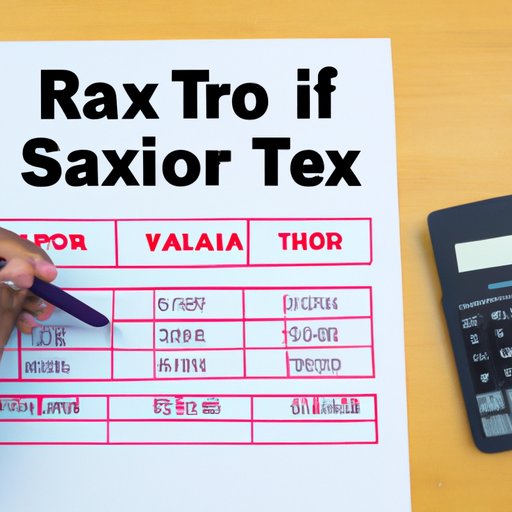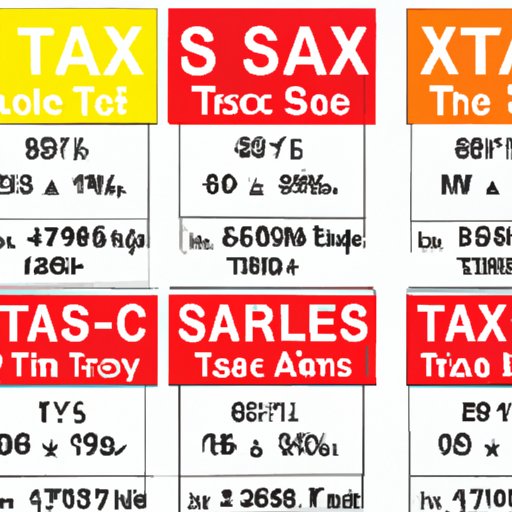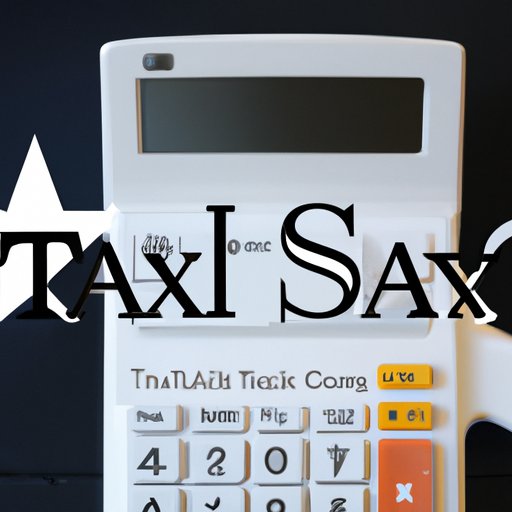Introduction
Sales tax is a type of consumption tax imposed by the government on the sale of goods and services. It is calculated based on the purchase price or value of the goods or services being sold. For small businesses operating in the state of Texas, it is important to understand the sales tax requirements and how to properly collect and pay the required taxes.
What Types of Transactions are Subject to Sales Tax in Texas?
In Texas, sales tax applies to most tangible personal property, digital products, and certain services. This includes items like clothing, furniture, electronics, books, and other items that can be physically touched. It also applies to digital products such as software, music, and videos. Certain services are also subject to sales tax in Texas, including services related to construction, repairs, landscaping, and more.

How to Collect and Report Sales Tax
In order to comply with Texas sales tax laws, small business owners must collect sales tax from customers at the time of sale and then report and remit the collected taxes to the state. Here is a step-by-step guide on how to do this:
- Obtain a sales tax permit from the Texas Comptroller of Public Accounts. This permit will allow you to collect and remit sales tax from customers.
- Set up a system to record all taxable sales. This could be done using an accounting software or spreadsheet.
- Collect sales tax from customers at the time of sale. The rate of sales tax will vary depending on the county where the sale took place.
- File a monthly sales tax report with the Texas Comptroller of Public Accounts. This report should include the total amount of sales tax collected during the month.
- Remit the collected sales tax to the state within 20 days of the end of the reporting period.

Different Rates of Sales Tax Across Different Counties in Texas
The rate of sales tax in Texas varies depending on the county where the sale takes place. In addition to the state sales tax rate of 6.25%, local jurisdictions may impose additional sales taxes which can range from 0.00% to 2.00%. According to the Texas Comptroller of Public Accounts, “the local sales and use tax rate is determined by the taxing jurisdiction in which the sale or use occurs.”
Tips on How to Easily Calculate, Collect, and Pay Sales Tax
Calculating, collecting, and paying sales tax can be complicated for small business owners. To make the process easier, here are some tips to follow:
- Research and understand the applicable sales tax rates. Make sure to check the sales tax rate in each county where you do business.
- Keep accurate records of all sales and purchases. This will help when filing sales tax reports.
- Utilize a software program to automate the collection and payment of sales tax. This will save you time and ensure accuracy.
- Make sure to file your sales tax reports and remit payments on time. Late payments may result in penalties and interest.

Software Options for Automating Sales Tax Collection and Payment
There are several software programs available that can help small business owners automate the collection and payment of sales tax. These programs make it easier to track transactions, calculate taxes due, and submit payments to the state. Some popular software options include Avalara, TaxJar, and QuickBooks.
Resources for Further Information Regarding Sales Tax in Texas
For more information regarding sales tax in Texas, visit the Texas Comptroller of Public Accounts website. There you will find resources on registering for a sales tax permit, filing sales tax reports, and more. You can also contact their office directly with any questions or concerns.
Conclusion
Sales tax is an important requirement for small businesses operating in Texas. It is important to understand the sales tax requirements and to accurately calculate, collect, and pay the required taxes. By following the steps outlined in this article and utilizing software programs to automate the process, small business owners can ensure compliance with sales tax regulations.
A call-to-action for small business owners is to research and understand the applicable sales tax rates and keep accurate records of all sales and purchases. Utilizing software programs to automate the collection and payment of sales tax will save time and ensure accuracy. Visit the Texas Comptroller of Public Accounts website for more information and contact their office directly with any questions or concerns.
(Note: Is this article not meeting your expectations? Do you have knowledge or insights to share? Unlock new opportunities and expand your reach by joining our authors team. Click Registration to join us and share your expertise with our readers.)
